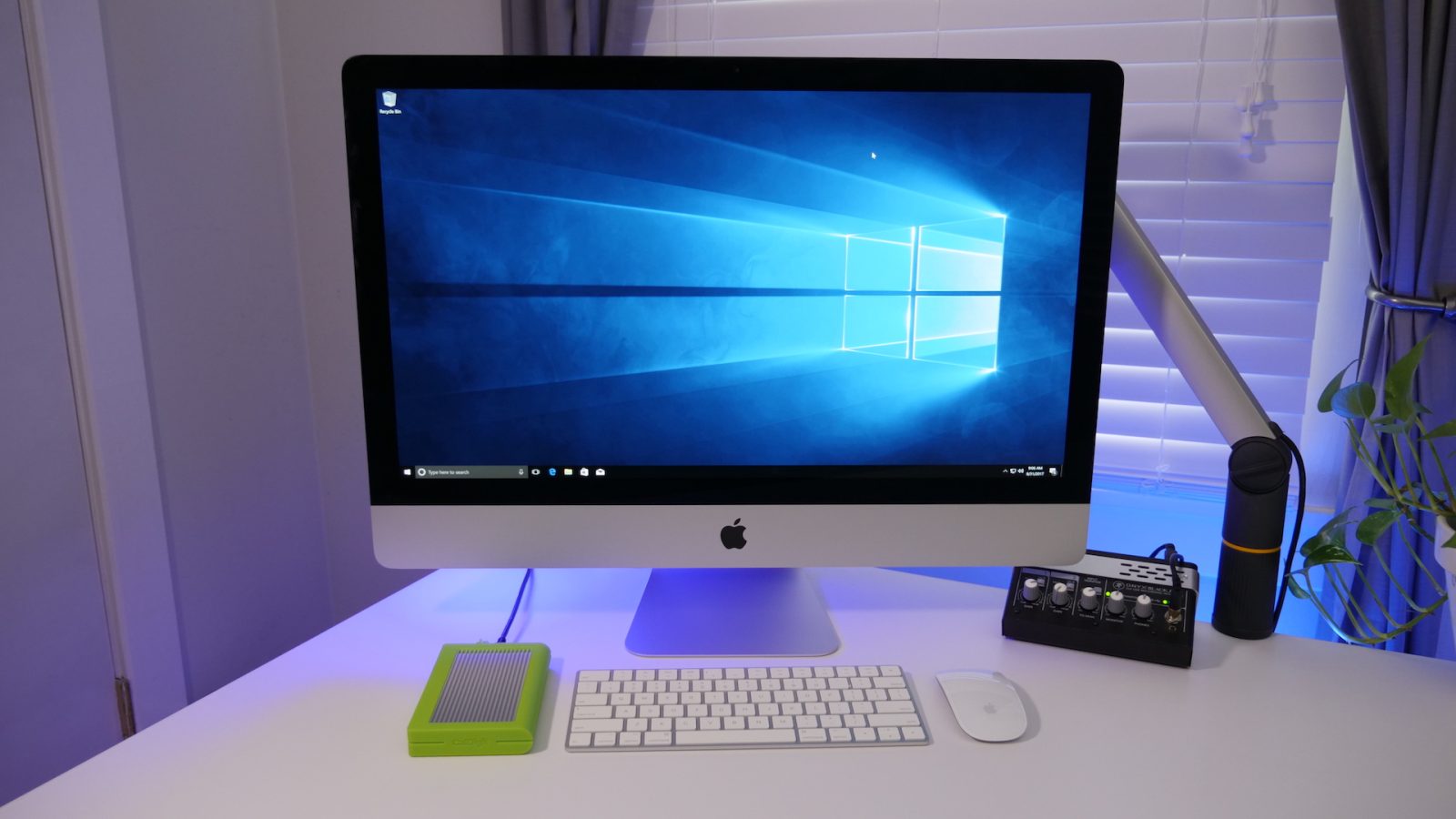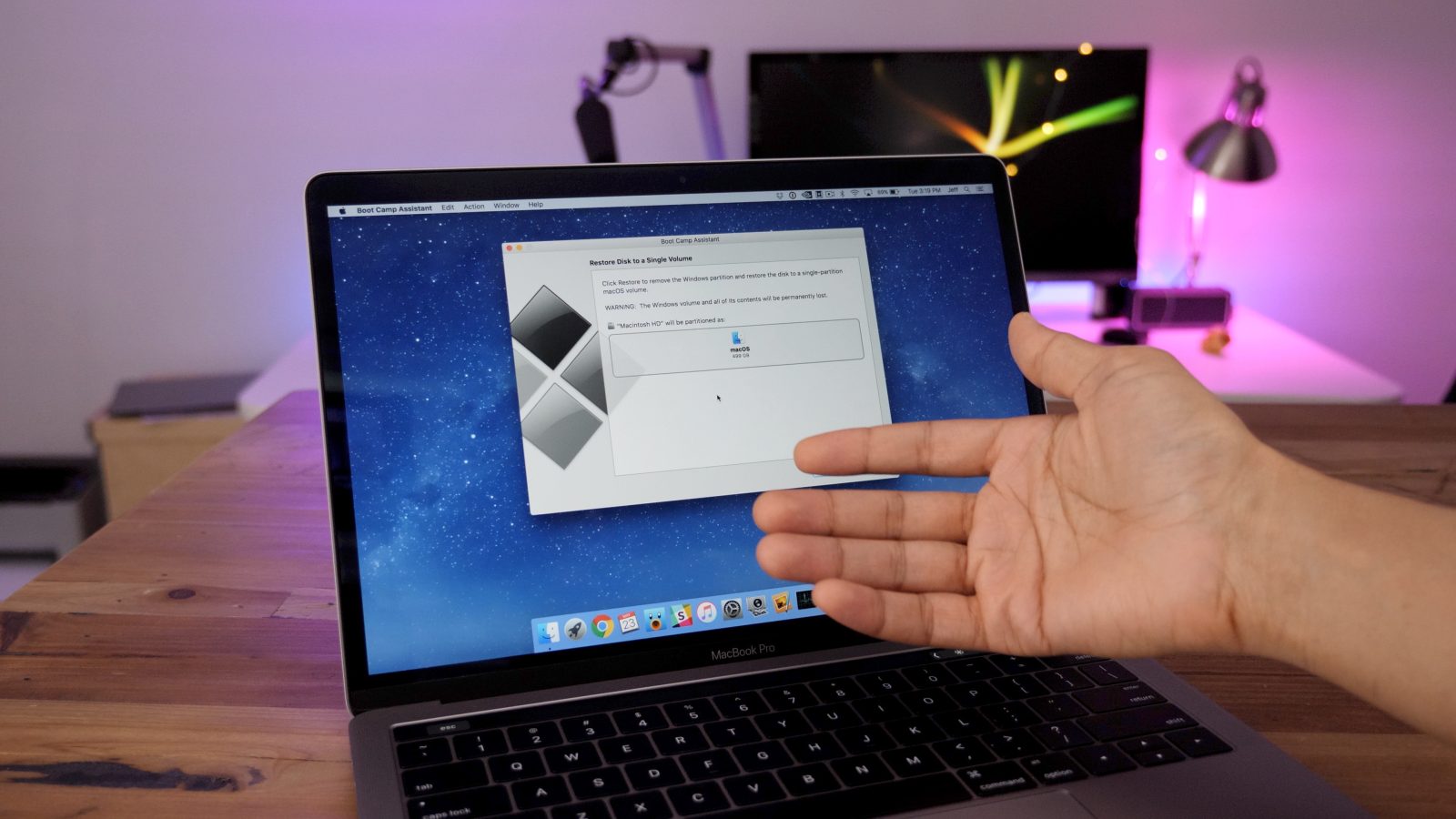Boot Camp

Boot Camp is a technology included with macOS that allows users to run Windows on Mac hardware. By means of the included Boot Camp Assistant, users can partition the main hard drive to make room for a Boot Camp Windows partition.
By pointing to a Windows ISO file, users can install Windows and dual boot between macOS and Windows as desired. Apple includes Boot Camp drivers to allow Mac hardware to function properly inside of Windows.





